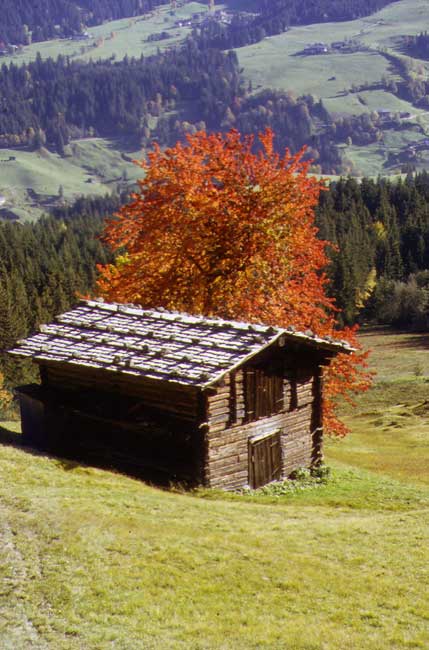Autumn is almost over in Jamieson. The higher peaks now have a light dusting of snow on them, and while there is still plenty of autumn colour about the town, many of the trees are bare The leaves that remain on the oak trees are now mostly brown, the tree sucking back in the nutrients photosynthesised by the rapidly retreating summer sun. In preparation for the winter, the tree now collects the rent. The deep green snowdrop sprouts are pushing up, commencing their wintry growth spurt that will culminate in the delightful late winter splashes of white about the lawn.
For some reason or other, the autumn colours this year seem to be more vivid than usual. I thought I was suffering from some kind of ocular disorder-perhaps I have been eating the wrong mushrooms – but arborists reckon a sunny summer followed by good autumn rains and a couple of cold snaps produces more vivid autumn colours. Apparently in many of the deciduous species, good growing conditions allow the plant to go into photosynthesis overdrive, creating lots of sugar, which creates luscious foliage. This also generates extra pigments, so it is no hallucination that this autumn Jamieson has taken on a hue and saturation akin to a world viewed through Fuji film. Yesterday found the valley bathed in autumnal sunshine, the sky that surreal deep blue you only see at this time of year, and sunshine after rain means – Mushrooms!
I was brought up on field mushrooms and taught from an early age that all other mushrooms were toadstools, and deadly poisonous. All that changed when as a lad of 21 I moved to the Austrian Tyrol to teach skiing and climb mountains. It was here during the alpine autumn that I was introduced to the delights of wild mushrooms. When we weren’t climbing my friend Toni and I would forage endlessly about the Kitzbüheler Alps in search of a feed of fungi. At the tree line, where the alpine grasses were peppered with edelweiss we would pick the bitter yellow flowers of the arnica plant and infuse them in schnapps to use as a muscle rub, and on the lower slopes, from Toni’s hut we would wander out and collect delicious peppery golden chanterelles and the wonderful Stein Pilz, the meaty Boletus Edulis. I had never tasted anything like it in my life.
Back in Australia you can imagine my delight when I discovered that lurking beneath the pine forests around Jamieson were plentiful crops of Pine Mushrooms, otherwise known as the Saffron Milkcap Lactarius deliciosus, and the Slippery jack Suillus luteus
The Pine mushroom is not native to Australia, but is now found widely throughout pine forests in the south east of the continent. Whilst mainstream Australia is only now discovering what a delight these mushrooms are, they are widely consumed in many parts of the world, especially in Europe. In Poland they are pickled in jars with vinegar, in Spain they are popular in Valencian and Catalan cuisine, they are eaten in Provence and in Italy they are grilled with balsamic vinegar. In Cyprus they are grilled on coals with lemon juice, garlic and parsley, a truly delicious combination.
When picked, they exude a saffron coloured sap, and when bruised they stain blue, in fact they look seriously toxic, but fear not, identification is easy, they are singular in their colour and shape. They are a meaty mushroom that holds their texture well when cooked. Unlike many mushrooms, I find they suit cooking in olive oil far better than in butter and cream. I like them either grilled on the barbecue in the Cypriot way, or slow cooked in a heavy based saucepan on the wood stove with olive oil, garlic, salt, pepper and loads of parsley to make a pine mushroom goulash. This is stunning on top of a nice crisp potato, bacon and parsley rösti.




Hi, this is very wonderful blog, thank for sharing this info with the universe